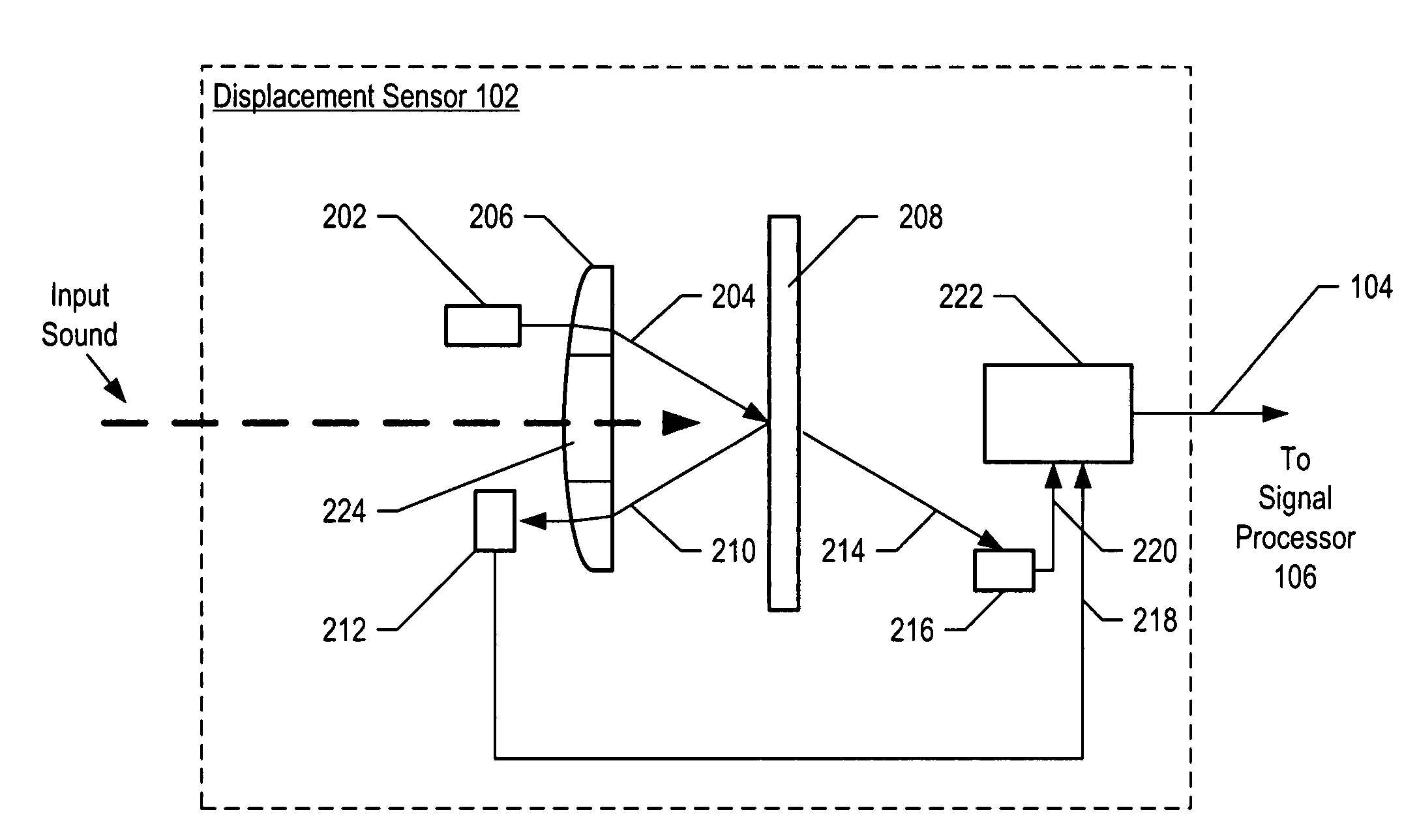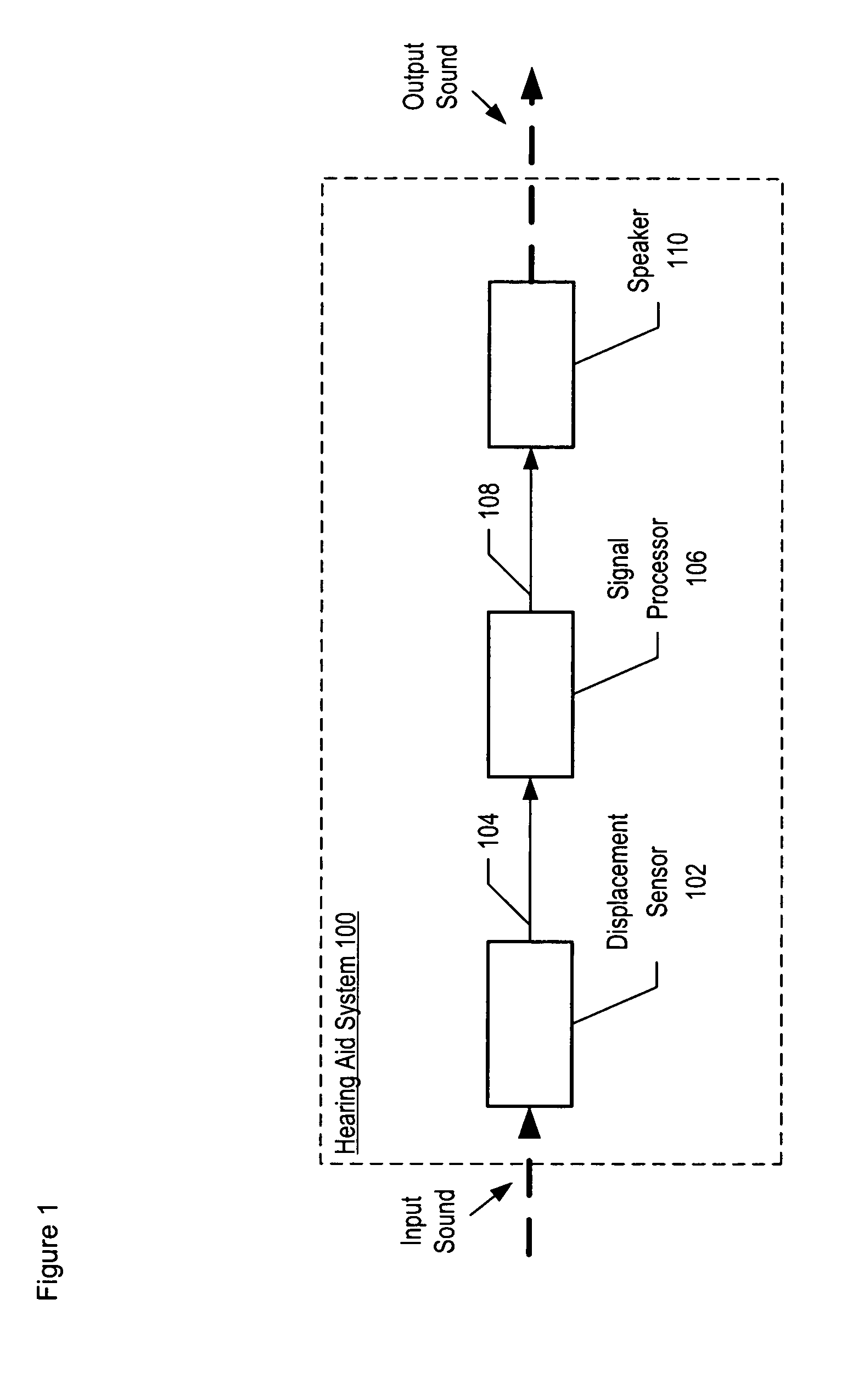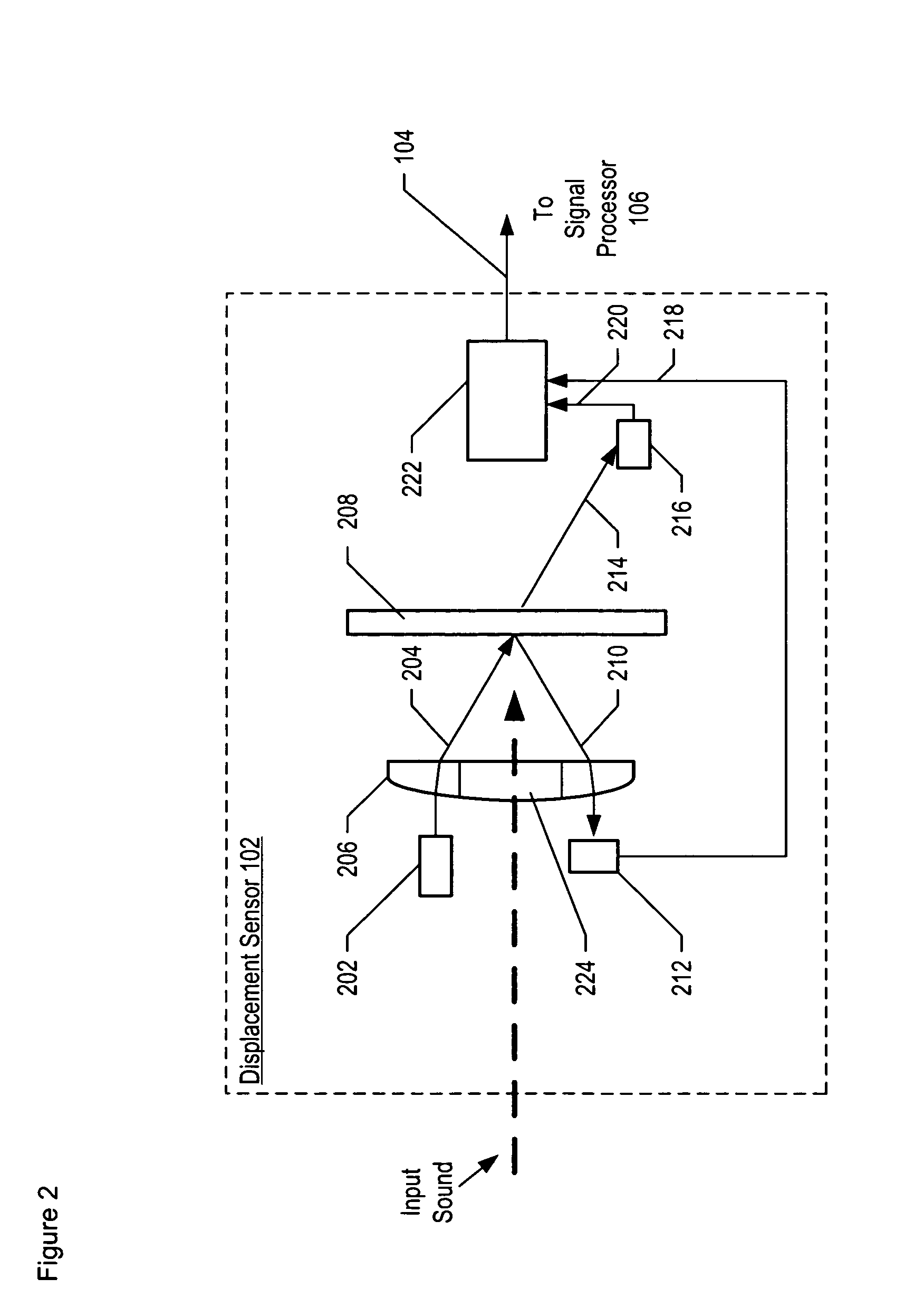Apparatus comprising a high-signal-to-noise displacement sensor and method therefore
a displacement sensor and signal-to-noise technology, applied in the field of displacement sensors, can solve the problems of waste of a large amount of available optical energy, and achieve the effects of reducing noise, improving snr, and increasing signal strength
- Summary
- Abstract
- Description
- Claims
- Application Information
AI Technical Summary
Benefits of technology
Problems solved by technology
Method used
Image
Examples
Embodiment Construction
[0018]The following terms are defined for use in this Specification, including the appended claims:[0019]Optical device means a device that is capable of predictably or controllably affecting an optical signal, such as by absorption, reflection, diffraction, transmission, generating an optical signal, or processing an optical signal. Examples include passive optical devices, such as lenses, mirrors, switches, diffraction gratings, etc., and active optical devices, such as lasers, light-emitting diodes, etc.[0020]Fabry-Perot etalon means an optically-resonant cavity formed by two substantially parallel and substantially flat surfaces that are separated by a cavity length, wherein the cavity length is fixed.[0021]Fabry-Perot interferometer means an optically-resonant cavity formed by two substantially parallel and substantially flat surfaces that are separated by a cavity length, wherein the cavity length is not fixed. Examples include arrangements of plates wherein the cavity length ...
PUM
| Property | Measurement | Unit |
|---|---|---|
| spectral-width | aaaaa | aaaaa |
| spectral-width | aaaaa | aaaaa |
| spectral-width | aaaaa | aaaaa |
Abstract
Description
Claims
Application Information
 Login to View More
Login to View More - R&D
- Intellectual Property
- Life Sciences
- Materials
- Tech Scout
- Unparalleled Data Quality
- Higher Quality Content
- 60% Fewer Hallucinations
Browse by: Latest US Patents, China's latest patents, Technical Efficacy Thesaurus, Application Domain, Technology Topic, Popular Technical Reports.
© 2025 PatSnap. All rights reserved.Legal|Privacy policy|Modern Slavery Act Transparency Statement|Sitemap|About US| Contact US: help@patsnap.com



